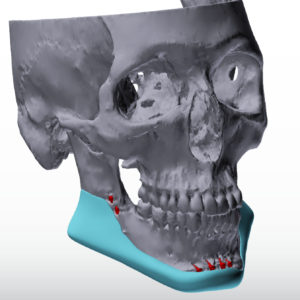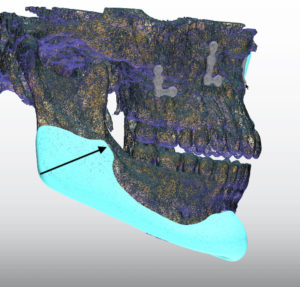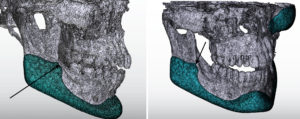Custom jawline implants offer an unparalleled ability to reshape the entire jawline and the lower face. Combining chin and jaw angle augmentation in a connected fashion can have a powerful effect given the surface area of the lower jaw that it covers. Because of this surface area coverage even small amounts of implant thickness create an external shape change that is more than I would think.
While the appeal of such a lower jaw implant is obvious, it is not a perfect technology. The design process remains subjective since the software can not yet tell us how to design the implant to achieve any patient’s specific desired look. The surgeon must provide that information to the best of his/her ability and hope the implant’s shape and various thicknesses throughout achieve what the patient wants.
In addition to design considerations, just because an implant is custom designed for the face does not mean that its surgical positioning will match exactly how it was designed to fit on the bone. While this is one of the obvious surgical goals, there is always the chance of implant malposition. Custom facial implants are not like Lego blocks, they do not snap fit together. (I wish they did as it would make the surgery a lot easier) The surgeon still has to place a smooth slippery implant on a smooth bone surface under indirect vision.Through small incisions and pockets that are not fully visualized, the surgeon must position the implant. This is a lot harder to do than how the implant design appears on the 3D skeletal model.



Dr. Barry Eppley
Indianapolis, Indiana


